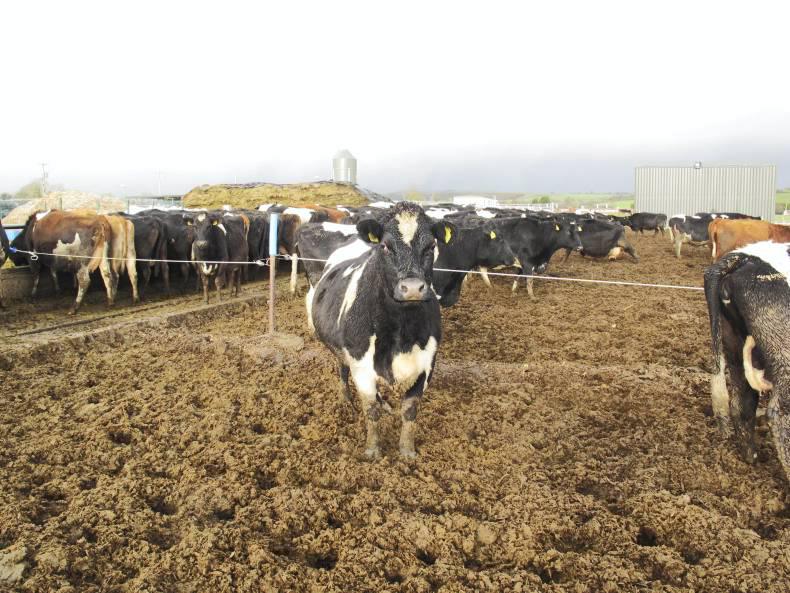The Greenfield Kilkenny farm is planning to produce almost 1.5m litres of milk at 4.68% fat and 3.71% protein (127,185kg of milk solids) in 2015, but at predicted milk prices, the farm is set to lose money this year.
The January budget shows total cash output will come to €531,278, but total cash costs will amount to €555,800, including capital repayment to the bank (€55,938).
That leaves a budgeted net cash defecit of approximately €20,000. That’s the January plan based on average base milk price of 24.8c/l (3.3% protein and 3.6% fat) plus VAT, but it is factored in that the farm will receive a milk price of 31.4c/l based on milk solid concentrations.
It could be better or worse depending on what actually happens. Creating the budget focuses the mind on what the farm will deliver or not in 2015 and what must be done to mimimise the impact of low milk prices.
While recent market sentiment has improved, it is important to put your farm on a firm footing in relation to volatility.
A strategy has been in place since the beginning on this farm to ensure the farm would be sustainable at low milk prices. To that end, a strong contingency fund has been built up when price was high which can be drawn on in years like 2015 if required.
In comparison, 2014 total sales amounted to €694,290, so 2015 has a planned drop of €163,012 (€510/cow) from last year. Total cash costs in 2014 were €659,343, of which capital repayments and capital expenditure amounted to €55,938 and €66,213 respectively.
The total cost of the new feed face, lagoon lining, all concrete and labour, etc, amounted to €66,213. There is no planned capital expenditure for 2015.
What other costs are planned to reduce? In total, the plan is to knock €32,000 off costs.
Maintenance should fall €16,000, breeding costs are planned to fall from €19,842 to €15,324, woodchip bedding and pad maintenance from €12,427 to €8,500, dairy supplies and parlour maintenance from €24,892 to €15,458 with pre-spraying abandoned and there was significant milking parlour maintenance and development work carried out in 2014 in the parlour which will not be a feature in 2015.
Fertilizer is planned to stay the same at €52,658, feed costs are budgeted to rise and herd health-related costs are due to fall by €3,000.
In terms of milk production and favourable weather, last year couldn’t have been much better.
The late March/April calvers were milked right up to mid-December. Milking them any longer would have eaten further into their body fat reserves at little or no profit.
All winter silage was grown and conserved on-farm, compared with the year before when over 60% had to be purchased due to the mini-droughts that saw drops in growth.
The last of the pit silage is being eaten at the moment, but there are over 800 good-quality round bales left.
In terms of physical performance last year, the farm grew 13.5t DM/ha and the 310 cows produced 1,435,359 litres of milk (4,630 litres/cow) at 4.67% fat and 3.69% protein (400kg MS/cow). Total meal fed was 270kg/cow.
Current position update
Cows have started to calve this week. There are 35 cows calved as of today (Wednesday), but on average, farm staff expect about eight cows per day to calve for February, as 80% of the 335 in-calf are expected in the first six weeks.
Cows started on the woodchip pad in November and it was fine until heavy rain in January made conditions sticky, but now that it’s dry and cold, it’s fine again (see video online for more).
Watery slurry was spread in mid-January. The in-calf heifers come back in batches from the rearers about 10 days before they are due and they go on to a clean section of the pad for those cows near calving.
The cows are dry cow sealed so they are not as much a risk as the in-calf heifers to mastitis infection.
Young heifer calves get a Halicur dose costing €7.50/head, a shot of Bovipast costing €4.90/head and a Bovicox dose at €1/head and plenty of colostrum.
Each calf gets at least three litres of colostrum, either from the bottle and teat or stomach tube within two to three hours of birth.
There was some talk of vaccinating with rotavirus, but the decision was taken to hold and try to focus on getting good colostrum into the calves instead. With the new feed face, staff can fence off cows near calving from silage during the day and let cows to silage at night. So far, the majority of cows have calved during the day.






 This is a subscriber-only article
This is a subscriber-only article






SHARING OPTIONS: